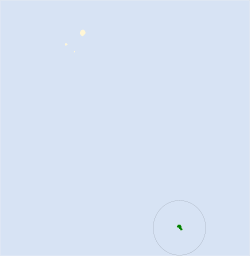| Gough finch | |
|---|---|
 | |
| Male on Gough Island | |
| Scientific classification | |
| Kingdom: | Animalia |
| Phylum: | Chordata |
| Class: | Aves |
| Order: | Passeriformes |
| Family: | Thraupidae |
| Genus: | Rowettia Lowe, 1923 |
| Species: | R. goughensis |
| Binomial name | |
| Rowettia goughensis (Clarke, WE, 1904) | |
 | |
| Synonyms | |
Nesospiza goughensis (protonym) | |
The Gough finch (Rowettia goughensis) or Gough bunting, is a critically endangered species of songbird.

